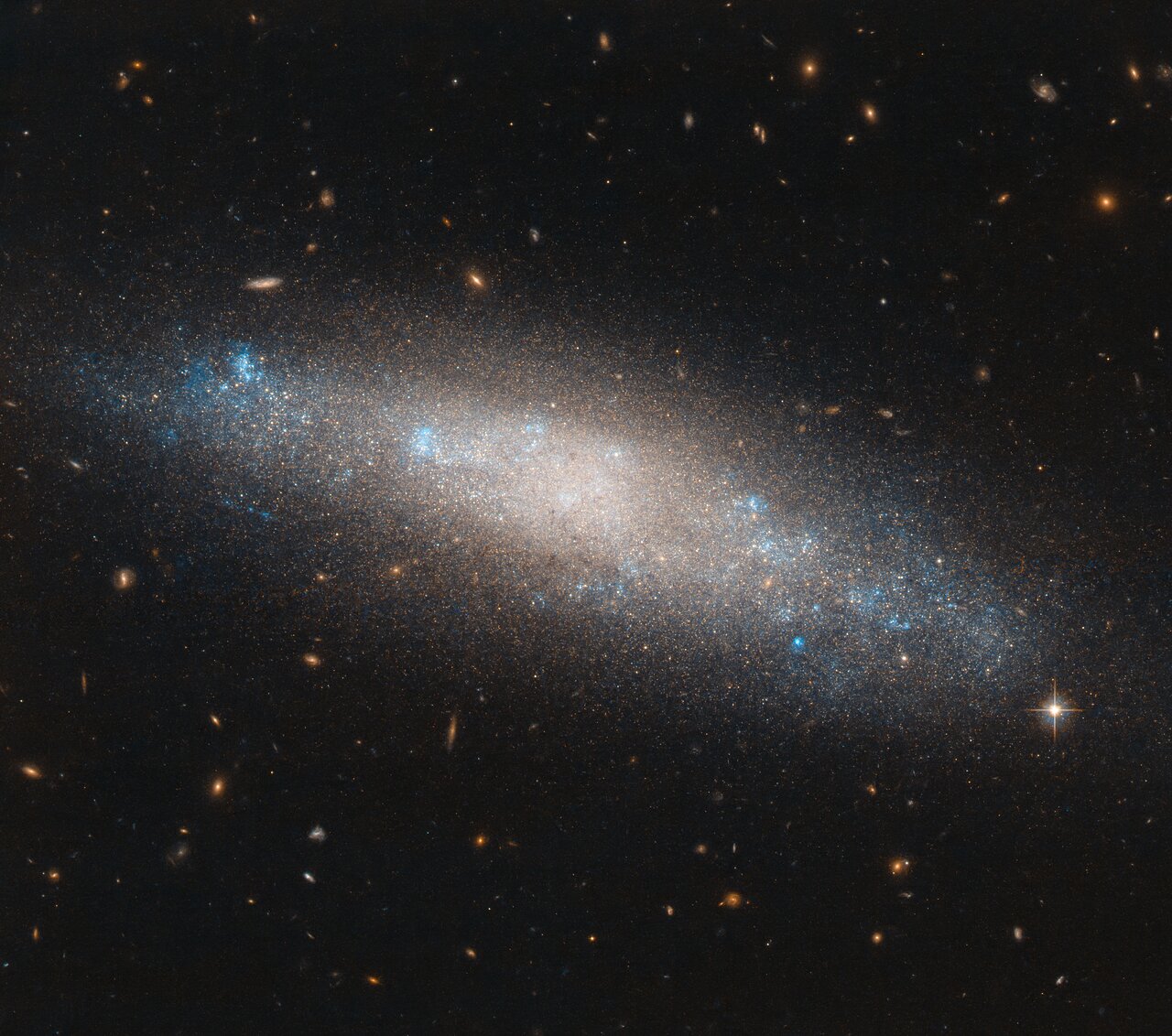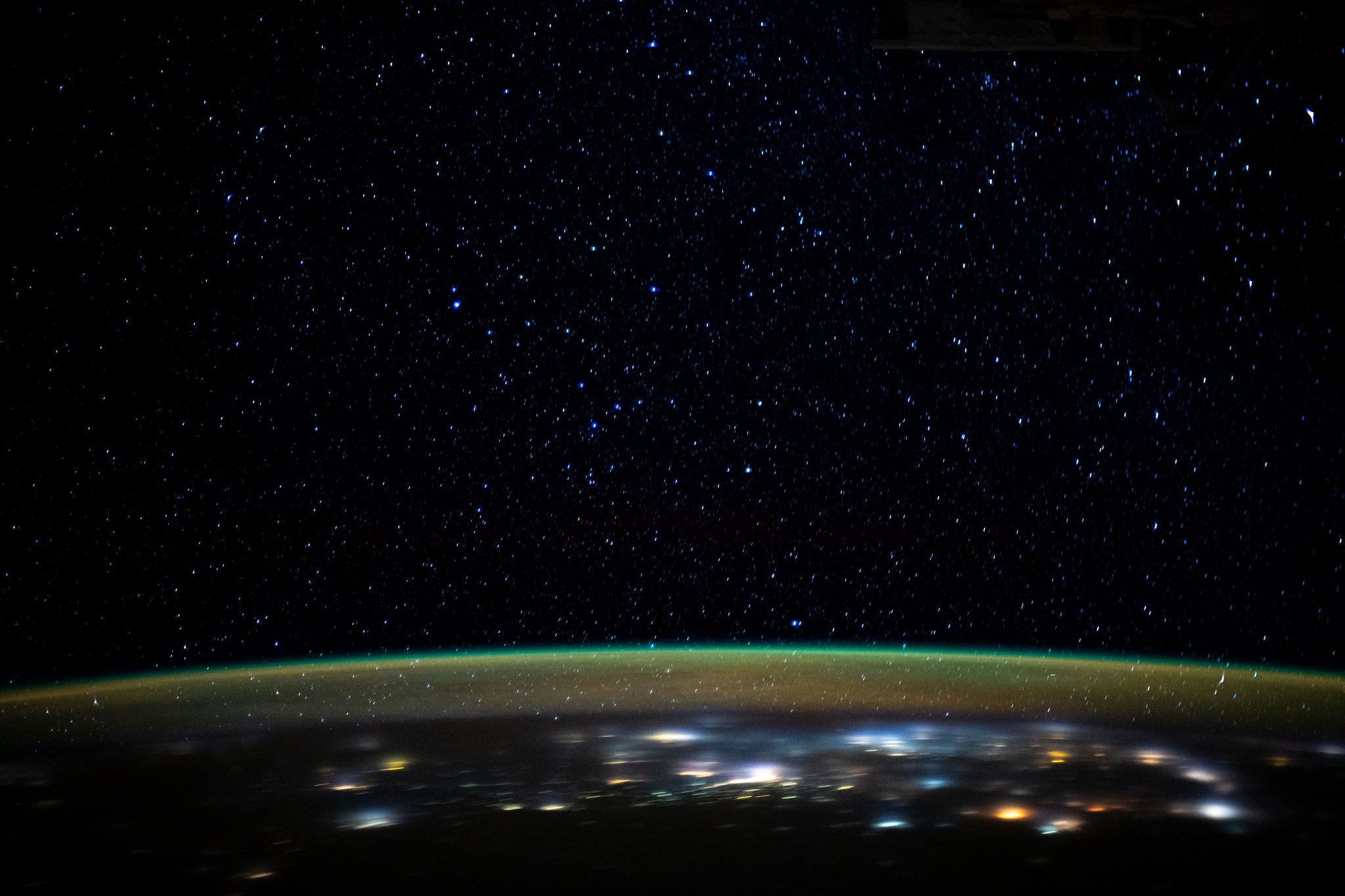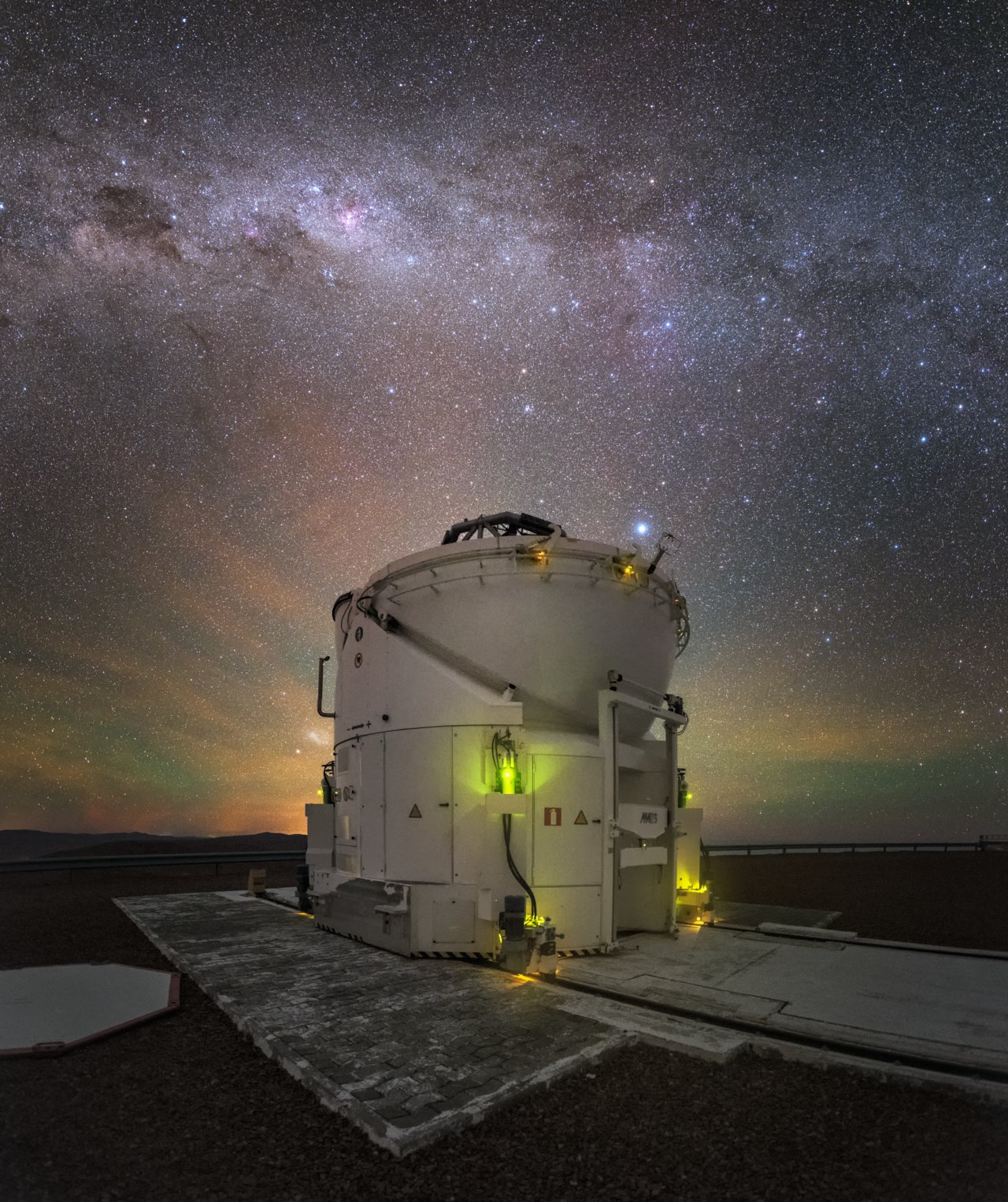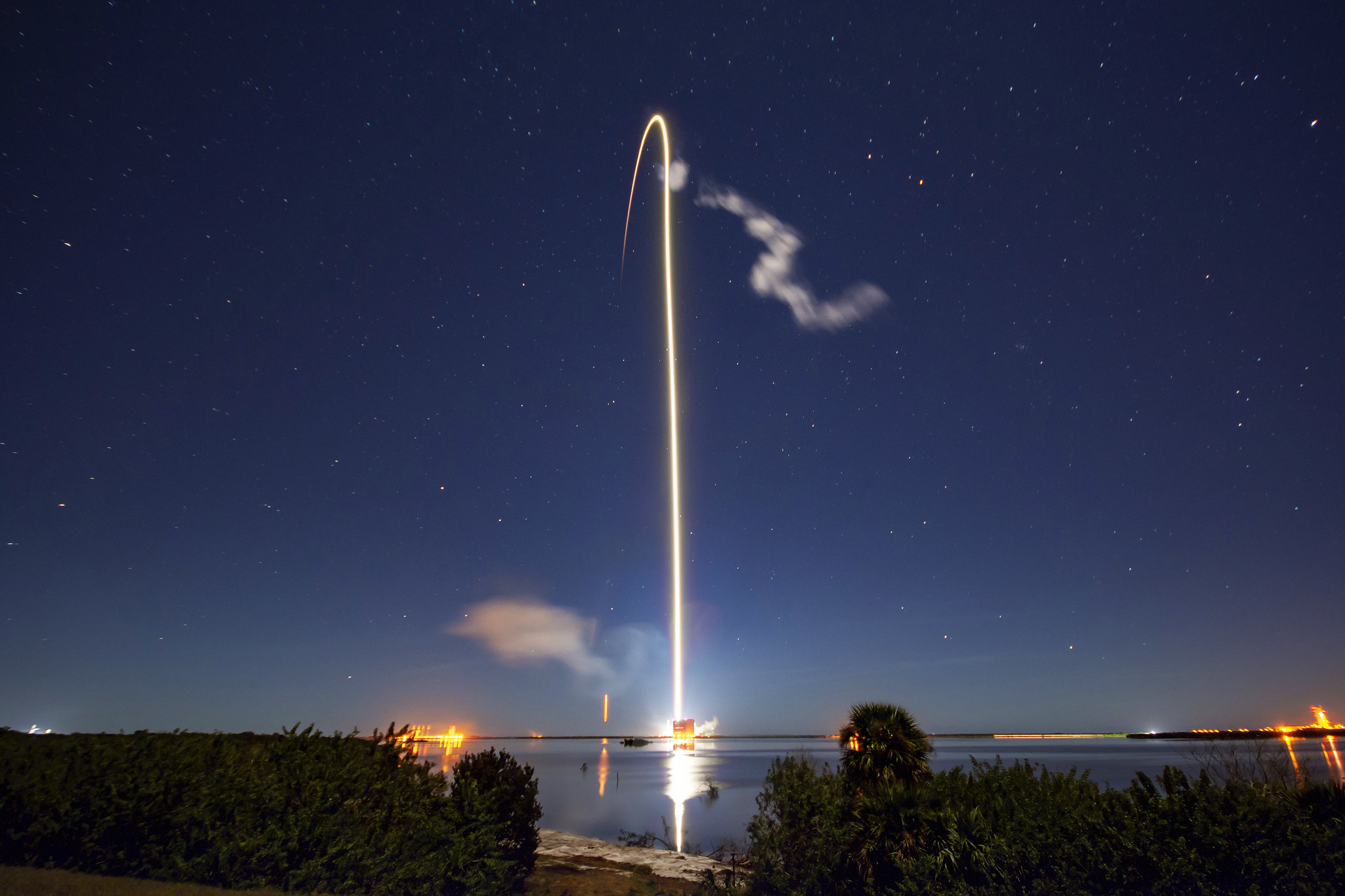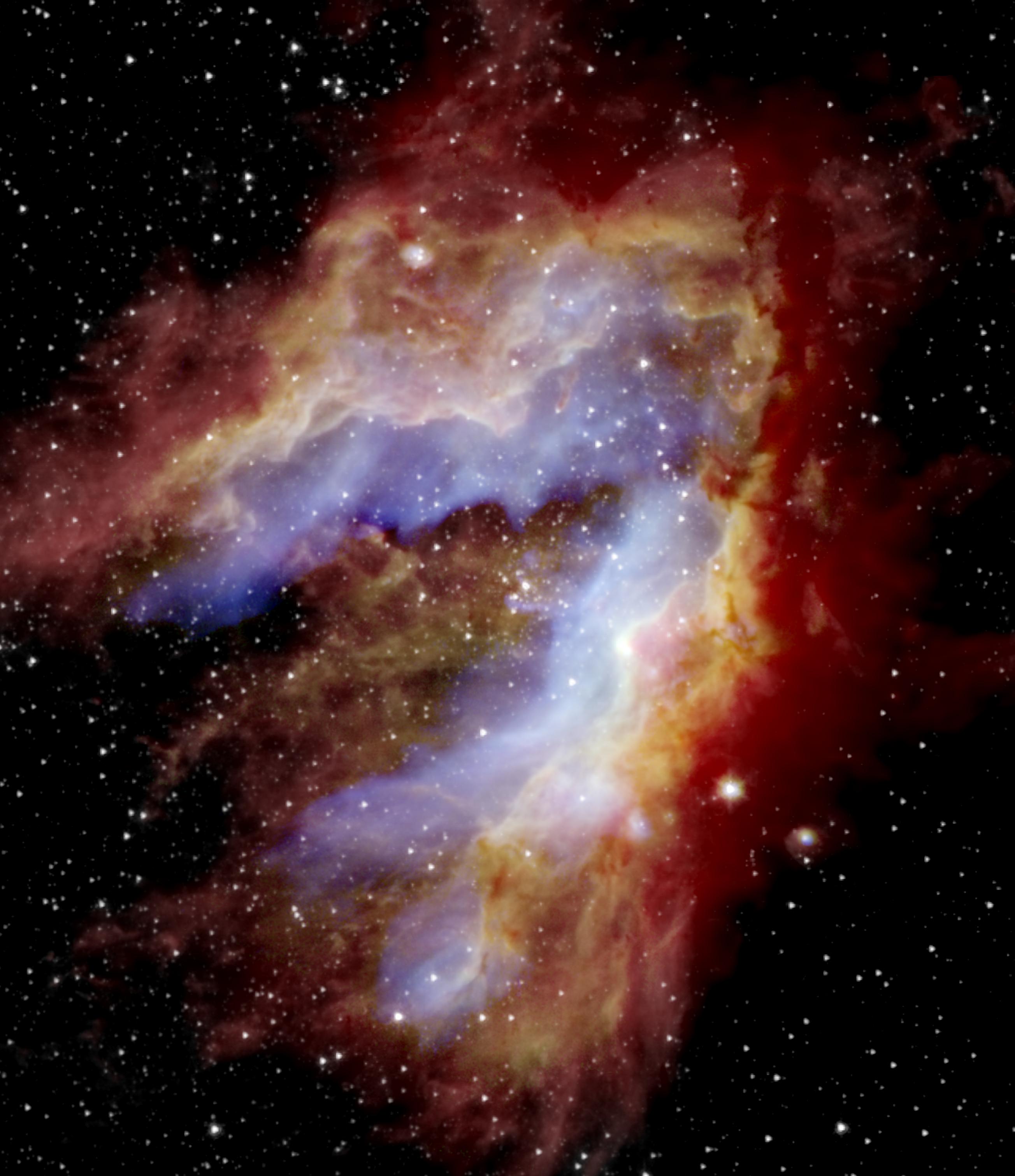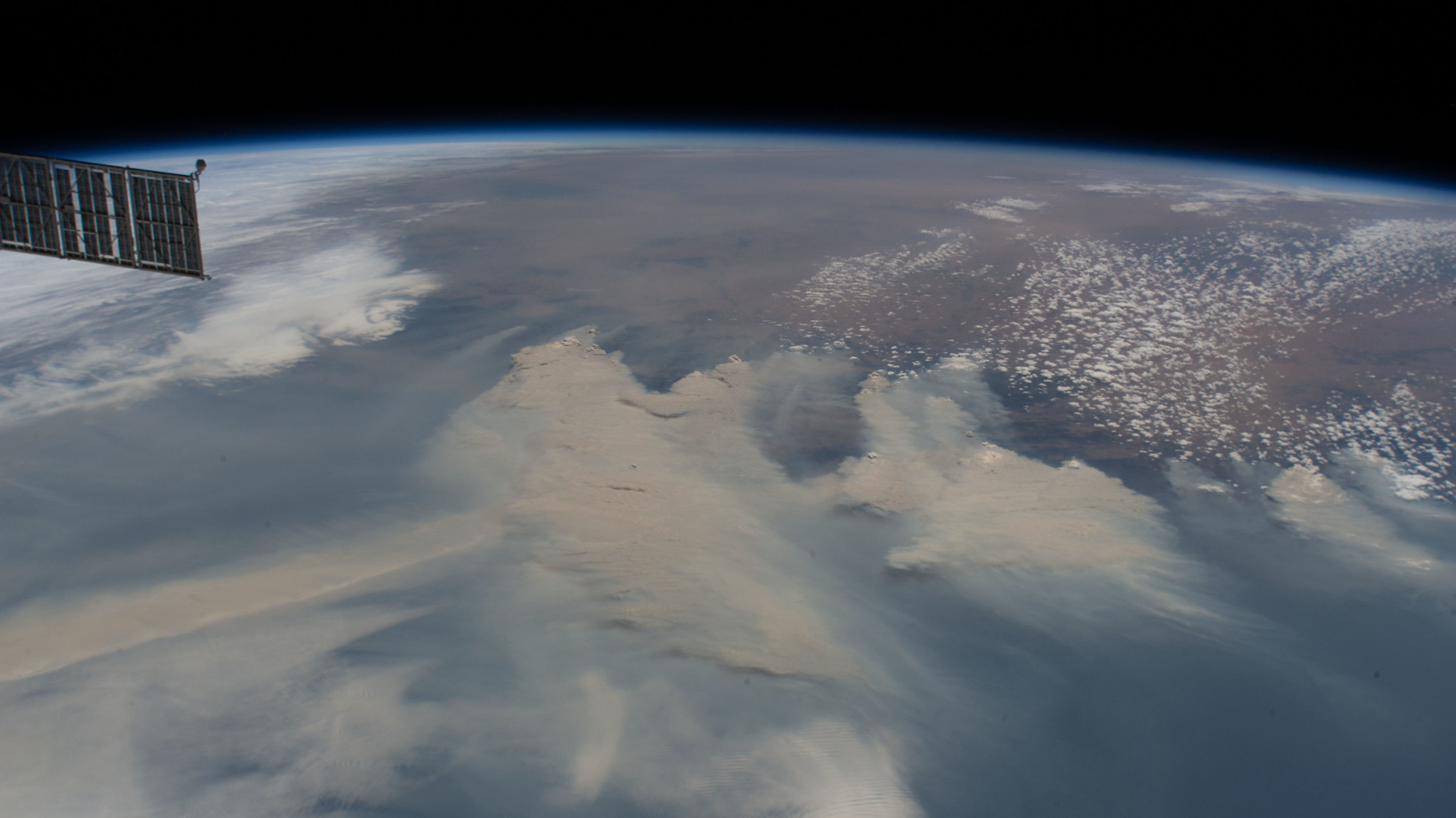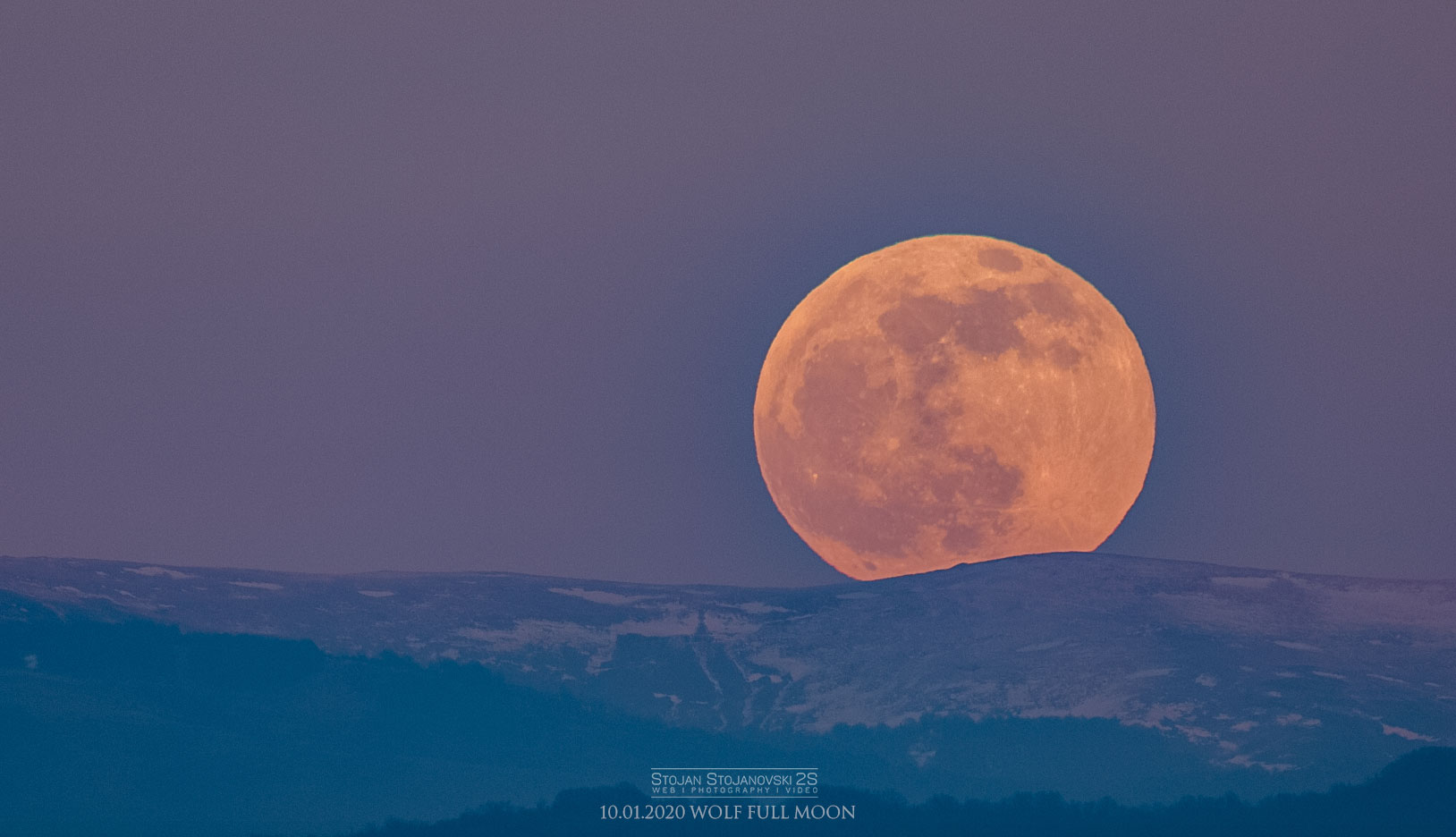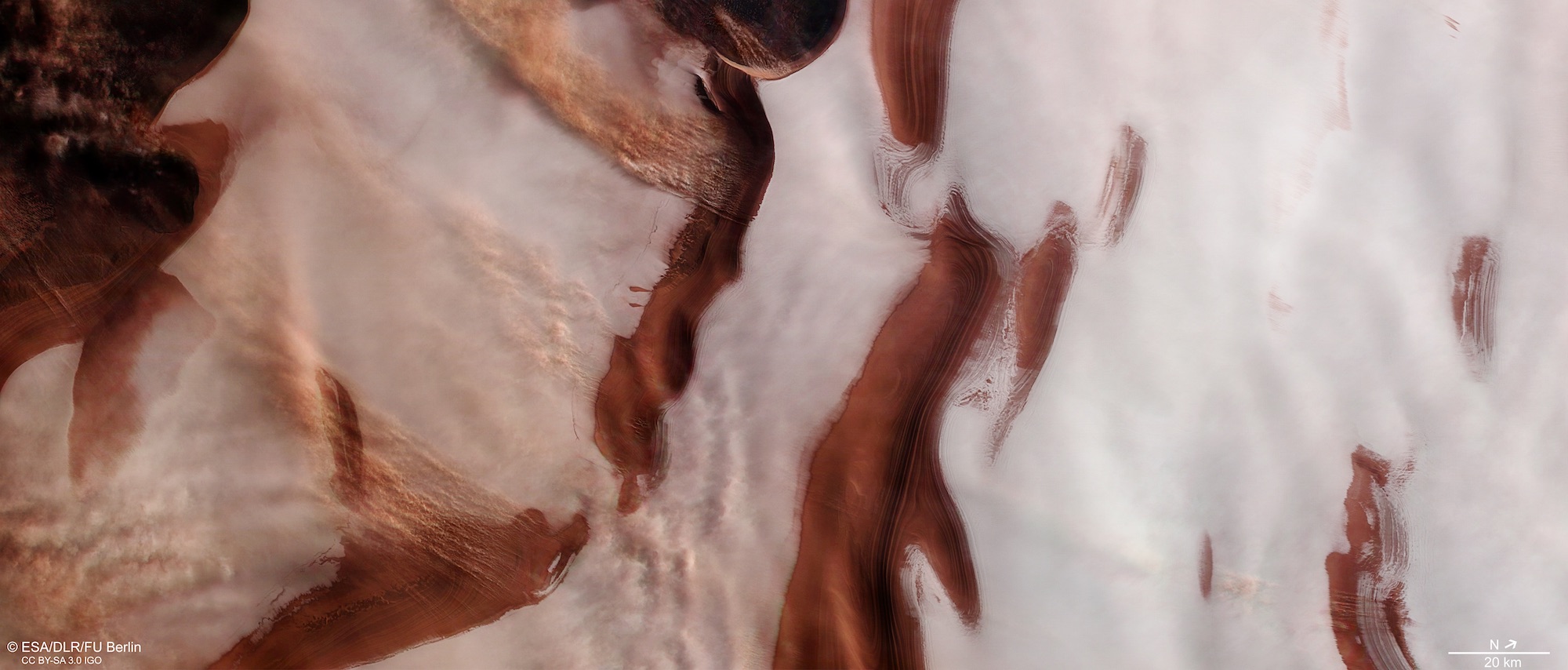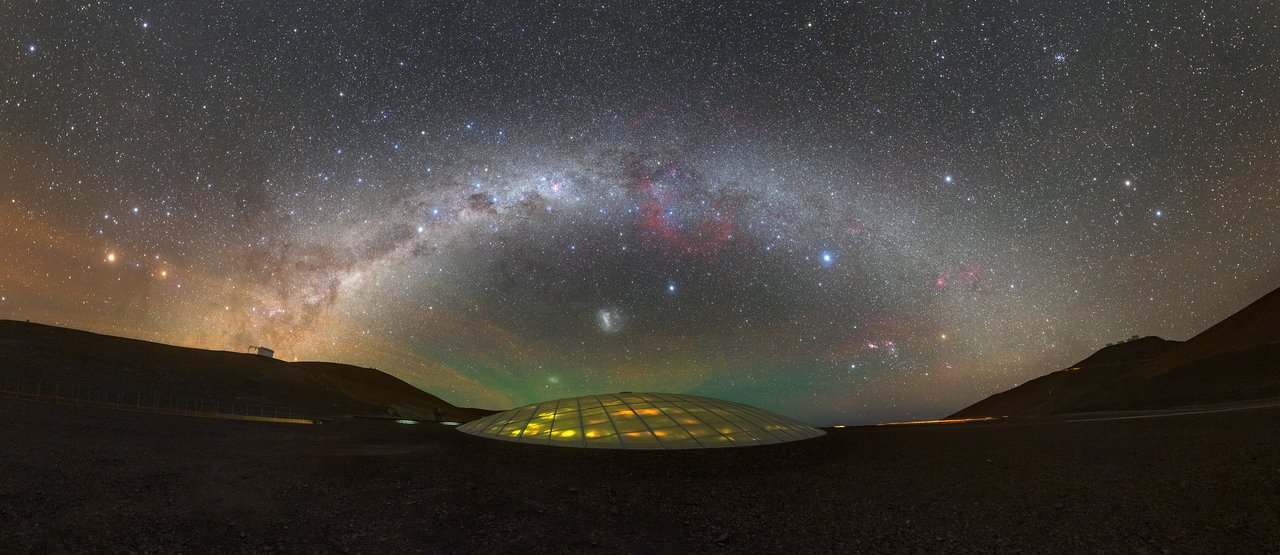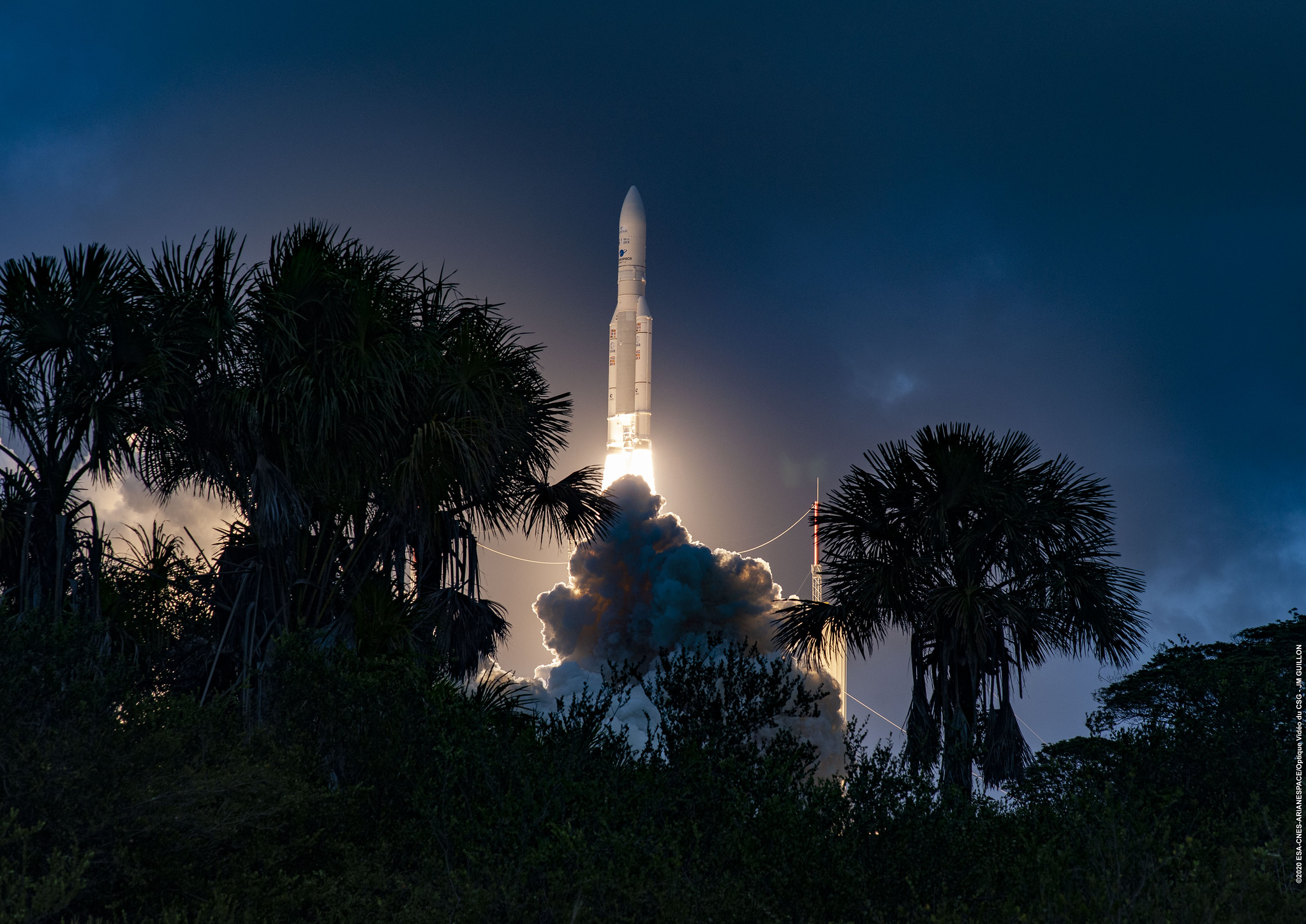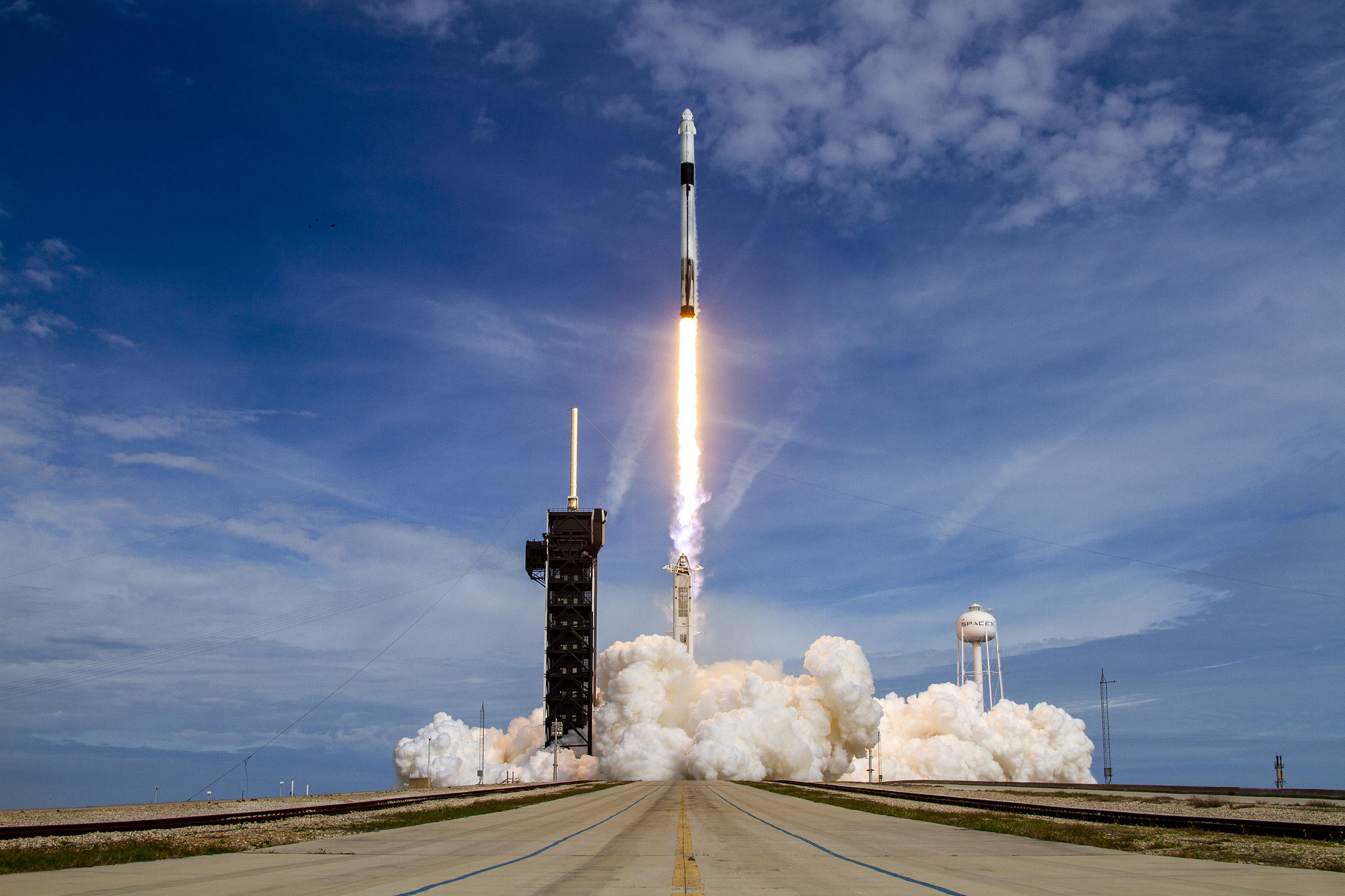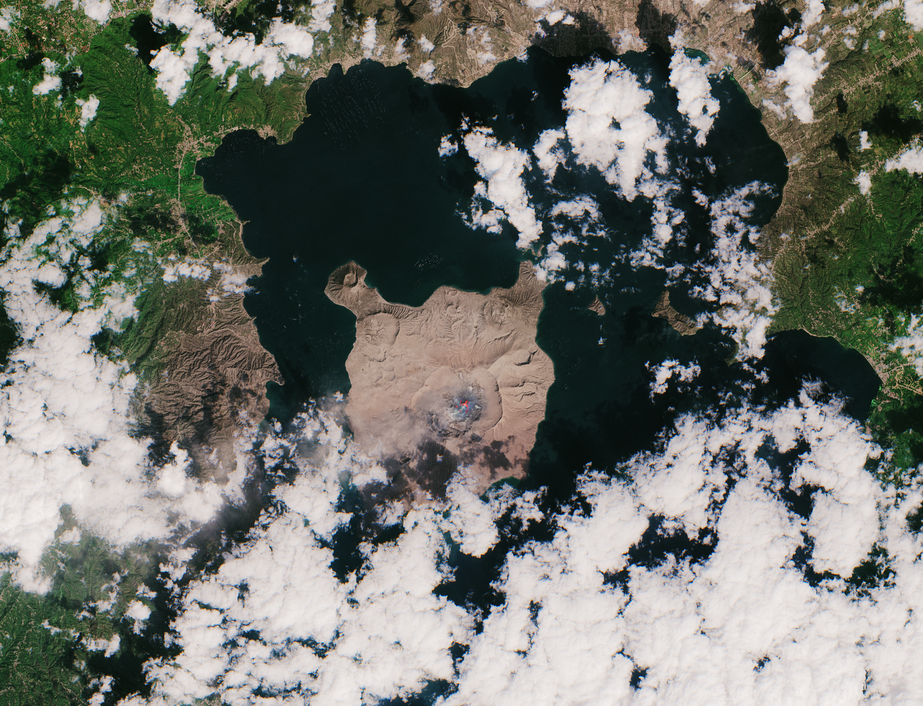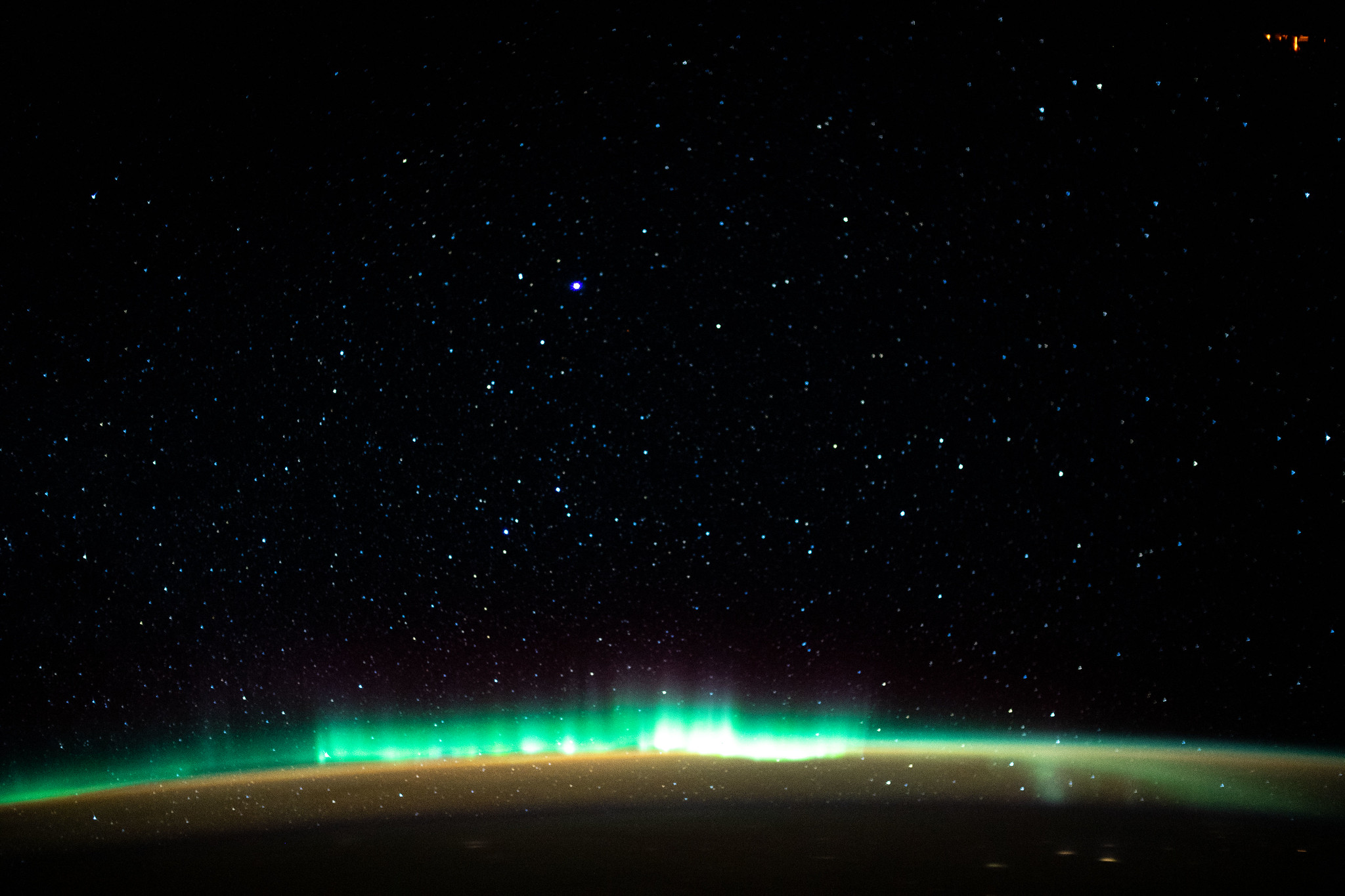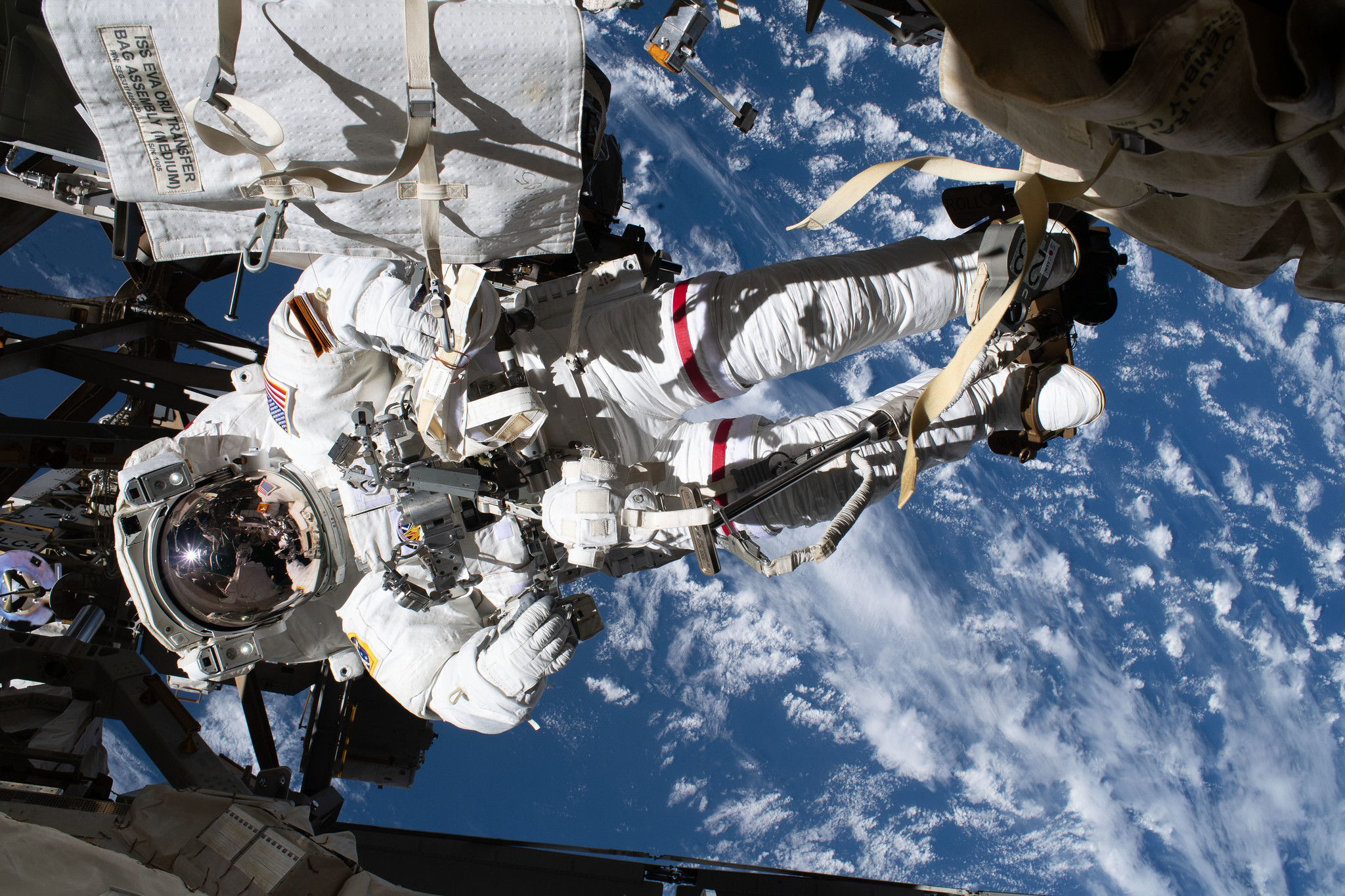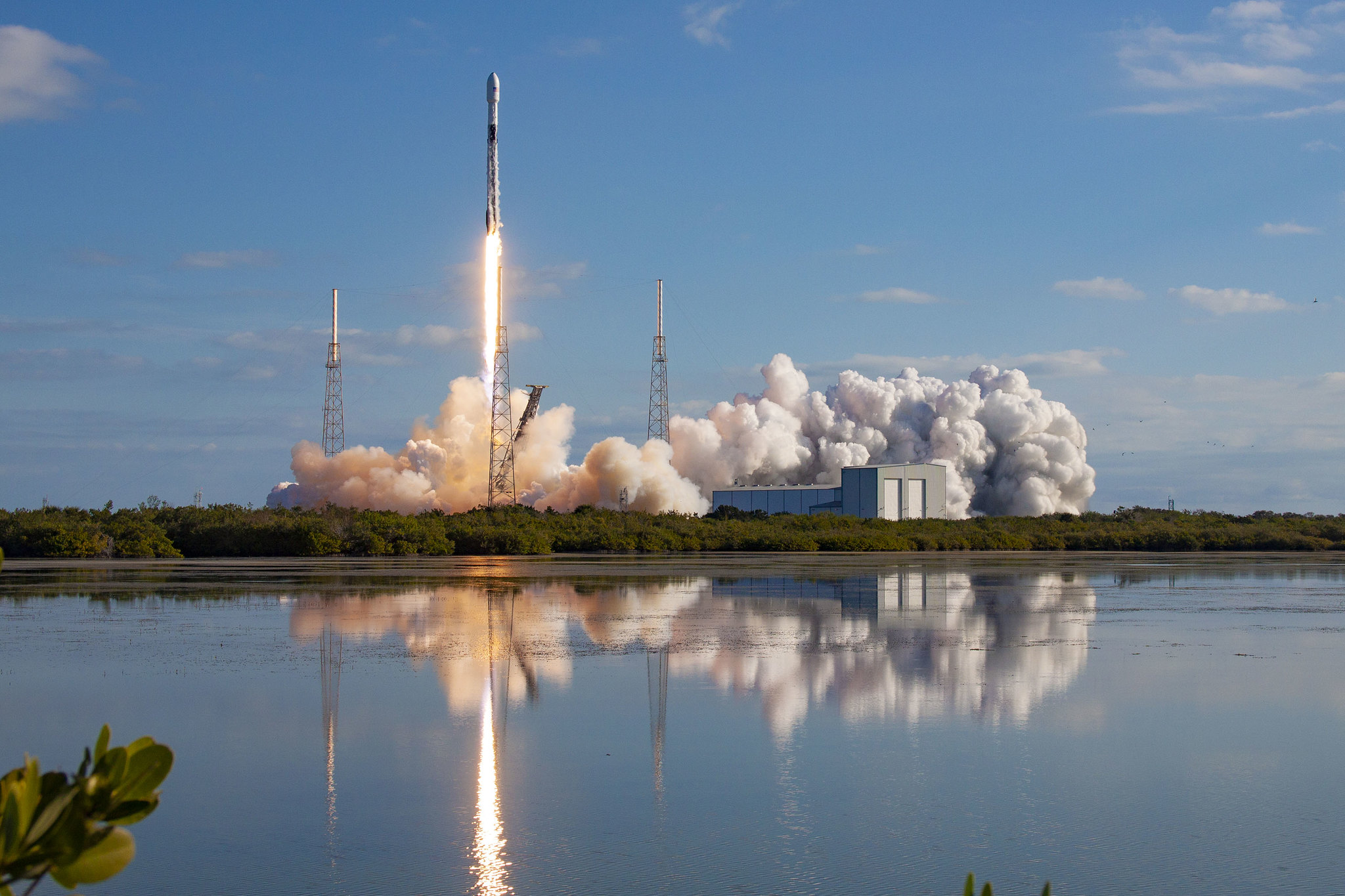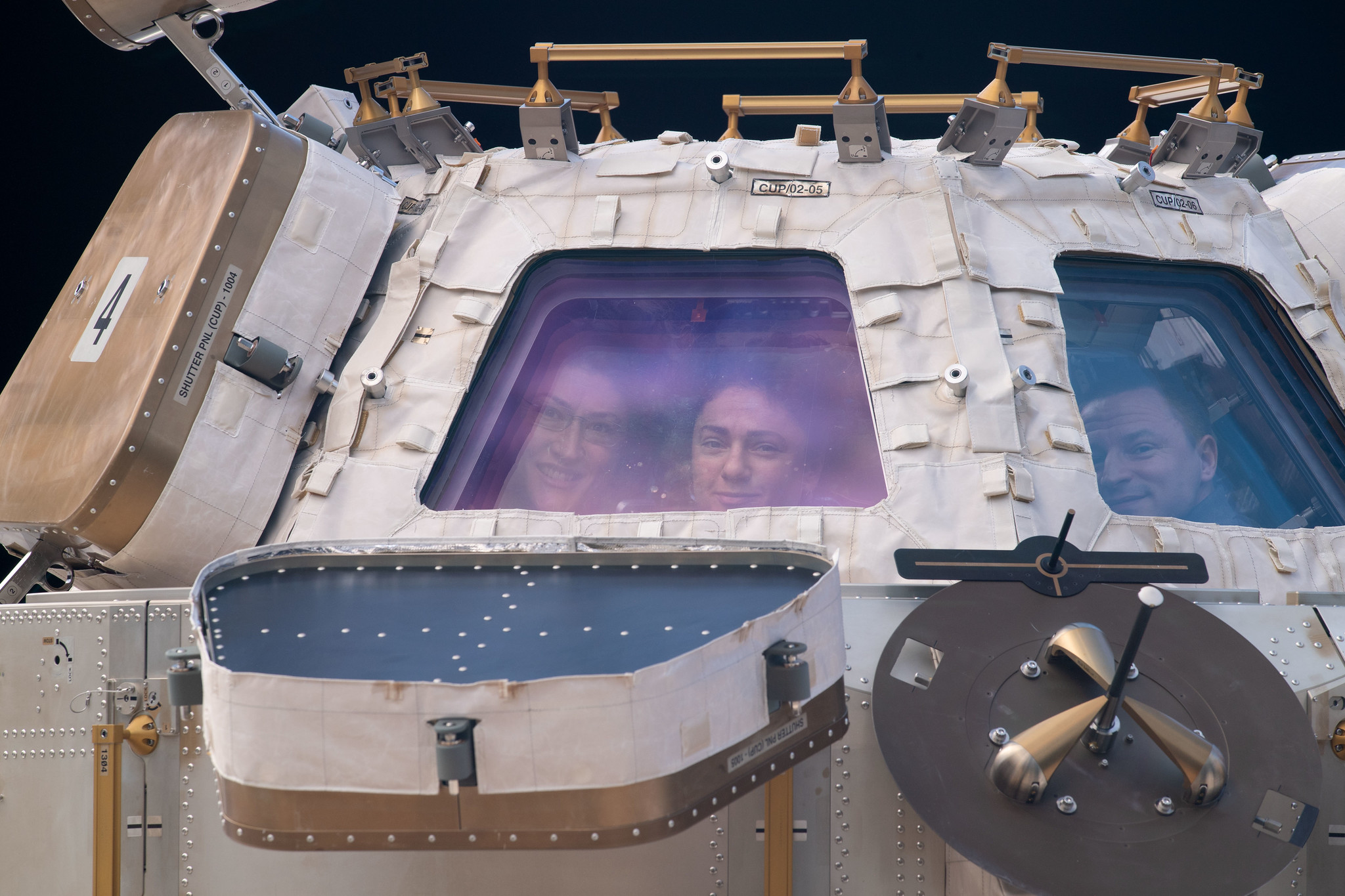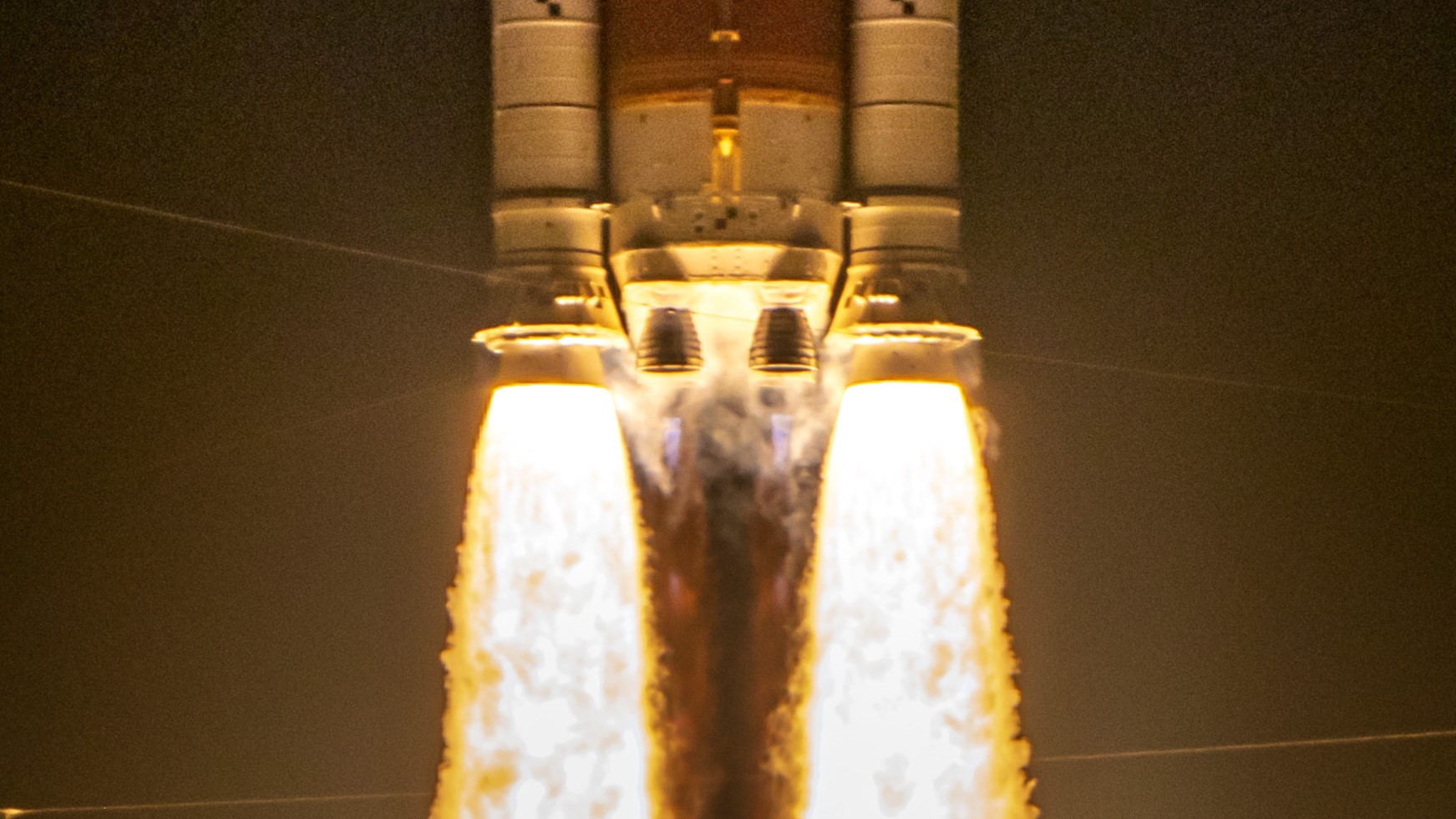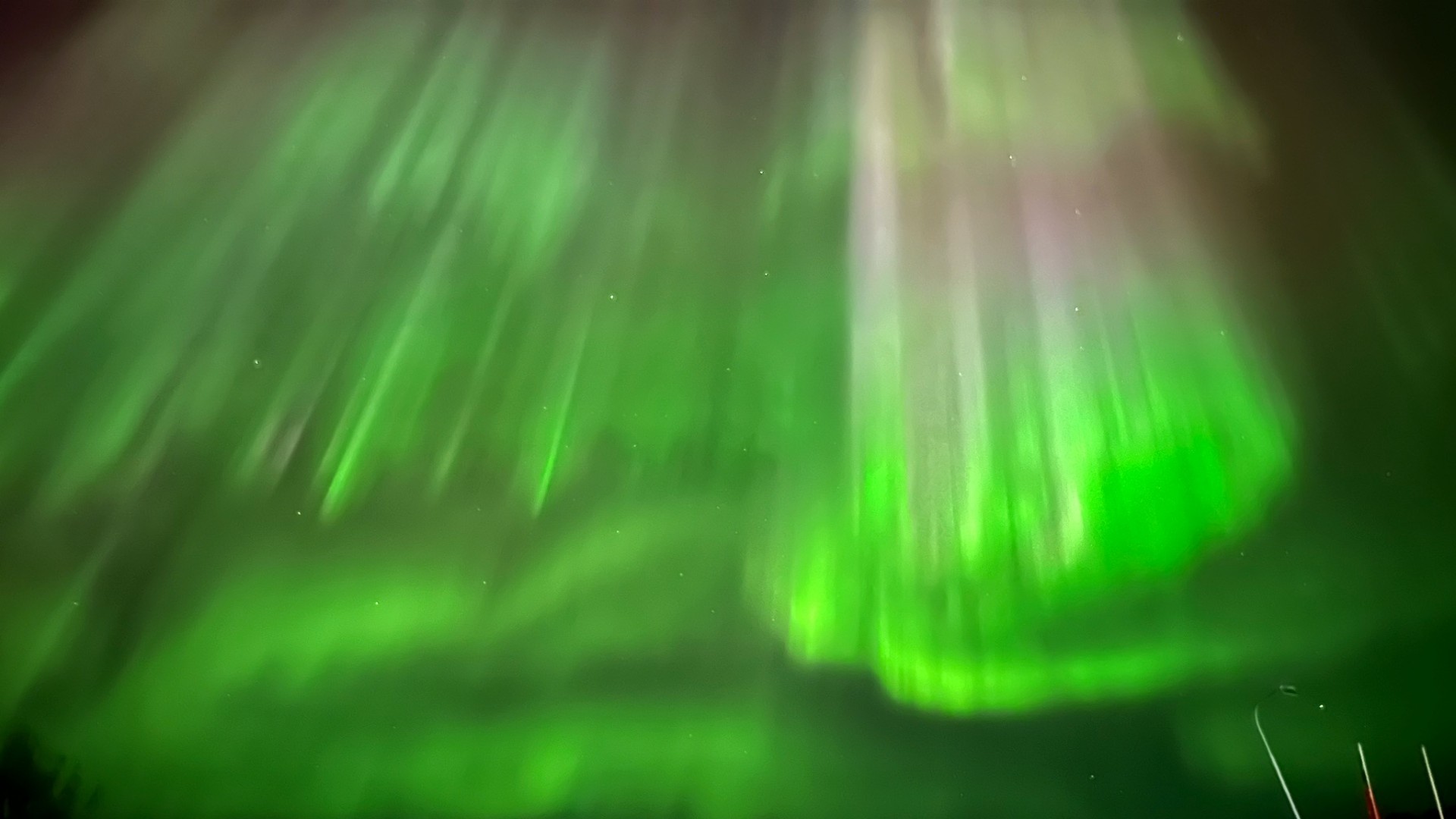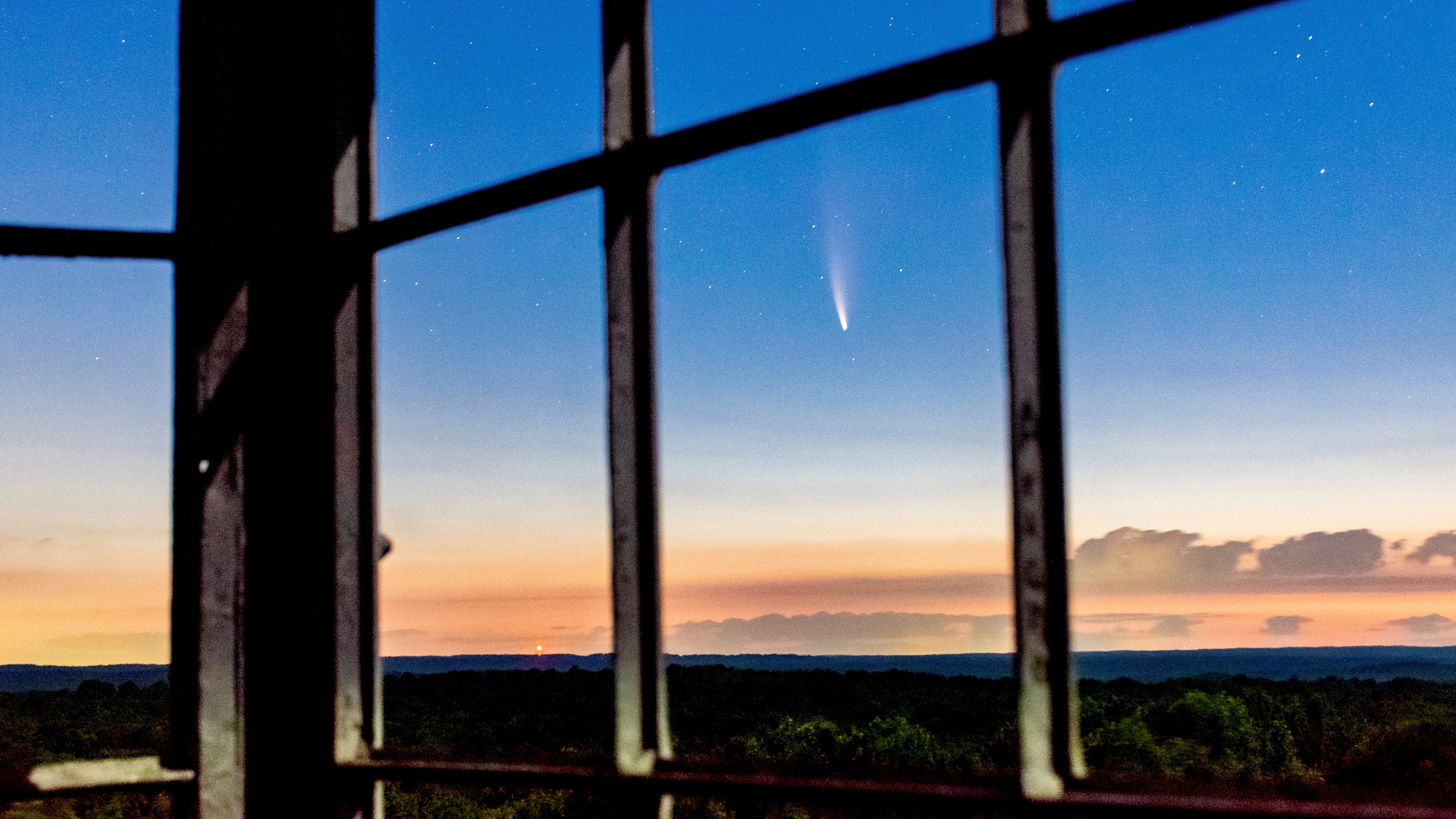Image of the Day 2020 Archive
Take a trip through time and space to explore all Space.com's Image of the Day photos from 2020!
January 2020
A galaxy in Berenice's Hair
Wednesday, January 1, 2020: The Hubble Space Telescope captured this stunning view of the spiral galaxy NGC 4455 in the constellation Coma Berenices, or Berenice's Hair, using its Advanced Camera for Surveys. The image was released Dec. 30. The galaxy is 45 million light-years away and its home constellation is the only star pattern to be named after an actual person from history: Queen Berenice II of Egypt.
According to ESA, Berenice was a queen of the ancient Greek city Cyrene (in what is now modern-day Libya) and later ruled Egypt after marrying its ruler, her cousin Ptolemy III Euergetes. She famously offered locks of her hair to the gods for Ptolemy's safe return from battle. — Tariq Malik
Stars and airglow over Iran
Thursday, January 2, 2020: A vivid, green airglow blankets Earth's upper atmosphere under the starry night sky in this view from the International Space Station. An astronaut on board captured this image on Dec. 29, when the station was orbiting about 260 miles (420 kilometers) above northern Iran, as the orbiting laboratory was about to pass over the Caspian Sea. — Hanneke Weitering
A burst of color in Chile's night sky
Friday, January 3, 2020: Green and yellow airglow topped with the shimmering core of the Milky Way galaxy provide a beautiful backdrop for a telescope at the Paranal Observatory in Chile in this image by European Southern Observatory (ESO) astrophotographer Yuri Beletsky. The telescope pictured here is one of four small auxiliary telescopes for ESO's Very Large Telescope array. — Hanneke Weitering
Meteors and auroras seen from space
Monday, January 6, 2020: As the annual Quadrantid meteor shower rained "shooting stars" over Earth this weekend, NASA astronaut Christina Koch captured this view of several meteors blazing through the atmosphere beneath the International Space Station. Meanwhile, brilliant lime-green auroras light up the sky in the distance, together with a soft orange airglow. — Hanneke Weitering
Hubble eyes a gigantic galaxy
Tuesday, January 7, 2020: This new image from the Hubble Space Telescope features the enormous spiral galaxy UGC 2885, which may be the largest known galaxy in the local universe. Located 232 million light-years from Earth in the constellation Perseus, UGC 2885 is about 2.5 times the width of the Milky Way and contains 10 times the number of stars. However, it's a relatively quiet galaxy, with new stars forming at only half the rate of new stars in the Milky Way. — Hanneke Weitering
Breaking space news, the latest updates on rocket launches, skywatching events and more!
Starlink satellites head to space
Wednesday, January 8, 2020: A SpaceX Falcon 9 rocket soars into space with 60 of the company's Starlink internet satellites in this long-exposure photo of the launch on Monday (Jan. 6). The rocket lifted off from Cape Canaveral Air Force Station in Florida at 9:19 p.m. EST (0219 GMT Tuesday) before returning to Earth for a drone-ship landing, marking the fourth time that this particular booster has flown. — Hanneke Weitering
The Swan Nebula
Thursday, January 9, 2020: The Swan Nebula, one of the biggest and brightest star forming regions in the Milky Way galaxy, only recently formed into the bird-shaped cloud we see today, new images have revealed. This composite image of the Swan Nebula combines data from NASA's flying telescope SOFIA (the Stratospheric Observatory for Infrared Astronomy), NASA's Spitzer Space Telescope and the European Space Agency's Herschel Space Telescope. In this image, astronomers discovered nine new protostars, or areas where dust and gas are collapsing to form new stars, and they were able to determine the ages of different features within the nebula.
"The central region is the oldest, most evolved and likely formed first," NASA officials said in a statement. "Next, the northern area formed, while the southern region is the youngest. Even though the northern area is older than the southern region, the radiation and stellar winds from previous generations of stars has disturbed the material there, preventing it from collapsing to form the next generation." — Hanneke Weitering
Australia's wildfires seen from space
Friday, January 10, 2020: Thick clouds of brown smoke from Australia's bushfires spread across the Tasman Sea in this photo captured by an astronaut at the International Space Station. The photo was taken on Jan. 4, when the station was orbiting 269 miles (433 kilometers) above the Tasman Sea. — Hanneke Weitering
Full Wolf Moon rising
Friday, January 10, 2020: Thick clouds of brown smoke from Australia's bushfires spread across the Tasman Sea in this photo captured by an astronaut at the International Space Station. The photo was taken on Jan. 4, when the station was orbiting 269 miles (433 kilometers) above the Tasman Sea. — Hanneke Weitering
A Martian winter wonderland
Tuesday, January 14, 2020: Earth isn't the only planet with a frosty north pole. This image of the north pole on Mars, captured by the European Space Agency's Mars Express orbiter, shows part of the planet's polar ice cap rippled with dark-red troughs and depressions, which indicate that strong winds have been blowing in the area. Although it does not snow on Mars, storm clouds can kick dust up into the atmosphere, causing erosion that changes the appearance of the landscape over time. — Hanneke Weitering
Milky Way shines over Residencia
Wednesday, January 15, 2020: The arc of the Milky Way galaxy forms a glowing dome above the European Southern Observatory's Residencia, a hotel for astronomers that was featured in the James Bond movie "Quantum of Solace." Residencia is located on top of Cerro Paranal, a mountain in Chile's Atacama Desert that is home to the Paranal Observatory. Also featured in this photo are two neighboring galaxies known as the Large and Small Magellanic Clouds, seen just below the Milky Way's glittering arc. — Hanneke Weitering
SLS under the Full Wolf Moon
Thursday, January 16, 2020: January's Full Wolf Moon rises behind NASA's Vehicle Assembly Building at the Kennedy Space Center in Florida, in this photo by NASA photographer Ben Smegelsky. To the right of the Vehicle Assembly Building is the mobile launcher that NASA will use to launch its new Space Launch System rocket and Orion crew spacecraft, which the agency plans to use to send astronauts back to the moon in 2024. — Hanneke Weitering
1st Arianespace launch of 2020
Friday, January 17, 2020: An Ariane 5 rocket rises between the silhouettes of two palm trees as it lifts off into the cloud-covered evening sky in Kourou, French Guiana, in this photo from Arianespace's first launch of the year. The rocket launched two communications satellites for Eutelsat and the Indian Space Research Organisation into orbit yesterday (Jan. 16) after lifting off from the Guiana Space Center at 6:05 p.m. local time (4:05 p.m. EST or 2105 GMT). — Hanneke Weitering
A stellar nursery shines in Vela
Tuesday, January 21, 2020: Colorful stars sparkle across a sea of cosmic dust and gas in this new view of Gum 26, a star-forming region in the Milky Way galaxy. Located 20,000 light-years from Earth in the constellation of Vela, the sails, Gum 26 is a hydrogen-rich emission nebula, also known as an H II region, where collapsing clumps of dust and gas are actively forming new stars. This new image of the stellar nursery was captured by the European Southern Observatory's Very Large Telescope in Chile. — Hanneke Weitering
Crew Dragon launches on critical abort test
Wednesday, January 22, 2020: A SpaceX Falcon 9 rocket blasts off from NASA's Kennedy Space Center for an uncrewed in-flight abort test of the company's Crew Dragon spacecraft. The mission, which launched on Sunday (Jan. 19), performed a crucial test of the capsule's emergency abort system that would carry astronauts to safety in the event of a problem during launch. The Crew Dragon successfully separated from the Falcon 9 rocket (which was destroyed during the test) mid-flight, and it splashed down in the Atlantic Ocean about 9 minutes after liftoff. — Hanneke Weitering
Light trails at the International Space Station
Thursday, January 23, 2020: Light trails streak across the Earth as star trails circle overhead in this stunning long-exposure photo taken by NASA astronaut Christina Koch at the International Space Station. At the top of the frame are the space station's solar arrays. Down below, flashes of lightning are scattered across the Earth's surface, while orange airglow illuminates the atmosphere. — Hanneke Weitering
A volcano eruption's ashy aftermath
Friday, January 24, 2020: A new satellite view of the Taal volcano that erupted in the Philippines on Jan. 12 reveals an island that is now completely covered in a thick blanket of ash. The eruption on Luzon island blasted ash plumes 9 miles (14 kilometers) into the air, and strong winds blew large amounts of ash to neighboring regions, especially the Agoncillo area, visible southwest of the Taal volcano. The European Space Agency's Copernicus Sentinel-2 mission acquired this view of the area on Thursday (Jan. 23). — Hanneke Weitering
Hubble eyes a strange spiral galaxy
Monday, January 27, 2020: The barred spiral galaxy NGC 1022 flaunts its tendrils of dark, red dust in this new view from the Hubble Space Telescope. While most barred spiral galaxies have a distinct bar of stars at their centers, the bar inside NGC 1022 is a bit more difficult to make out. To spot the faint feature, look for the swirling arms emerging from both ends. Hubble captured this image of NGC 1022 as part of a study into black holes, which lie at the center of most (if not all) spiral galaxies like this one. — Hanneke Weitering
Green auroras meet orange airglow
Tuesday. January 28, 2020: A vibrant, lime-green aurora lights up Earth's upper atmosphere in this photo captured by an astronaut at the International Space Station. When this photo was taken on Jan. 22, the station was orbiting 261 miles (420 kilometers) above the Atlantic Ocean off the coast of North America. Beneath the northern lights is a blanket of marmalade-colored airglow, a type of luminescence caused by ultraviolet light that triggers chemical reactions high in Earth's atmosphere. Auroras, on the other hand, are created when charged particles from the sun ionize or excite particles in the atmosphere, and they only occur near our planet's north and south poles. — Hanneke Weitering
Spacewalking astronaut works on the Alpha Magnetic Spectrometer
Wednesday, January 29, 2020: NASA astronaut Andrew Morgan is pictured working outside the International Space Station to finish up repairs to an ailing dark matter experiment called the Alpha Magnetic Spectrometer during a spacewalk on Jan. 25. He and European Space Agency astronaut Luca Parmitano spent 6 hours and 16 minutes working outside the orbiting lab in what was their fourth spacewalk together to repair the $2 billion experiment. — Hanneke Weitering
Starlink 3 launches from Florida
Thursday, January 30, 2020: A SpaceX Falcon 9 rocket lifts off from from Space Launch Complex 40 at Cape Canaveral Air Force Station in Florida on Wednesday (Jan. 29) to deliver 60 new Starlink satellites for its growing satellite internet constellation. The reusable rocket successfully launched and landed for a third time with this mission, called Starlink 3, and SpaceX managed to “catch” one half of the payload fairing with one of its net-wielding boats, known as "Ms. Tree." — Hanneke Weitering
Astronauts gather in the Cupola observatory
Friday, January 31, 2020: Three NASA astronauts peer through the windows of the International Space Station's Cupola observatory in this view from one of the station's external cameras. From left, Christina Koch, Jessica Meir and Andrew Morgan, all flight engineers for Expedition 61, prepare for the arrival of Northrop Grumman's Cygnus NG-12 cargo freighter, which arrived at the orbiting lab on Nov. 4, 2019. That Cygnus spacecraft just departed the station this morning, beginning a monthlong secondary mission to deploy small experiments in orbit before it burns up in Earth's atmosphere. — Hanneke Weitering
Can't find the date you're looking for? It may have been a weekend or holiday, when we don't normally update our Image of the Day.
Click 'NEXT PAGE' below for February >
Image of the Day Archives
Image of the Day 2024 Archive
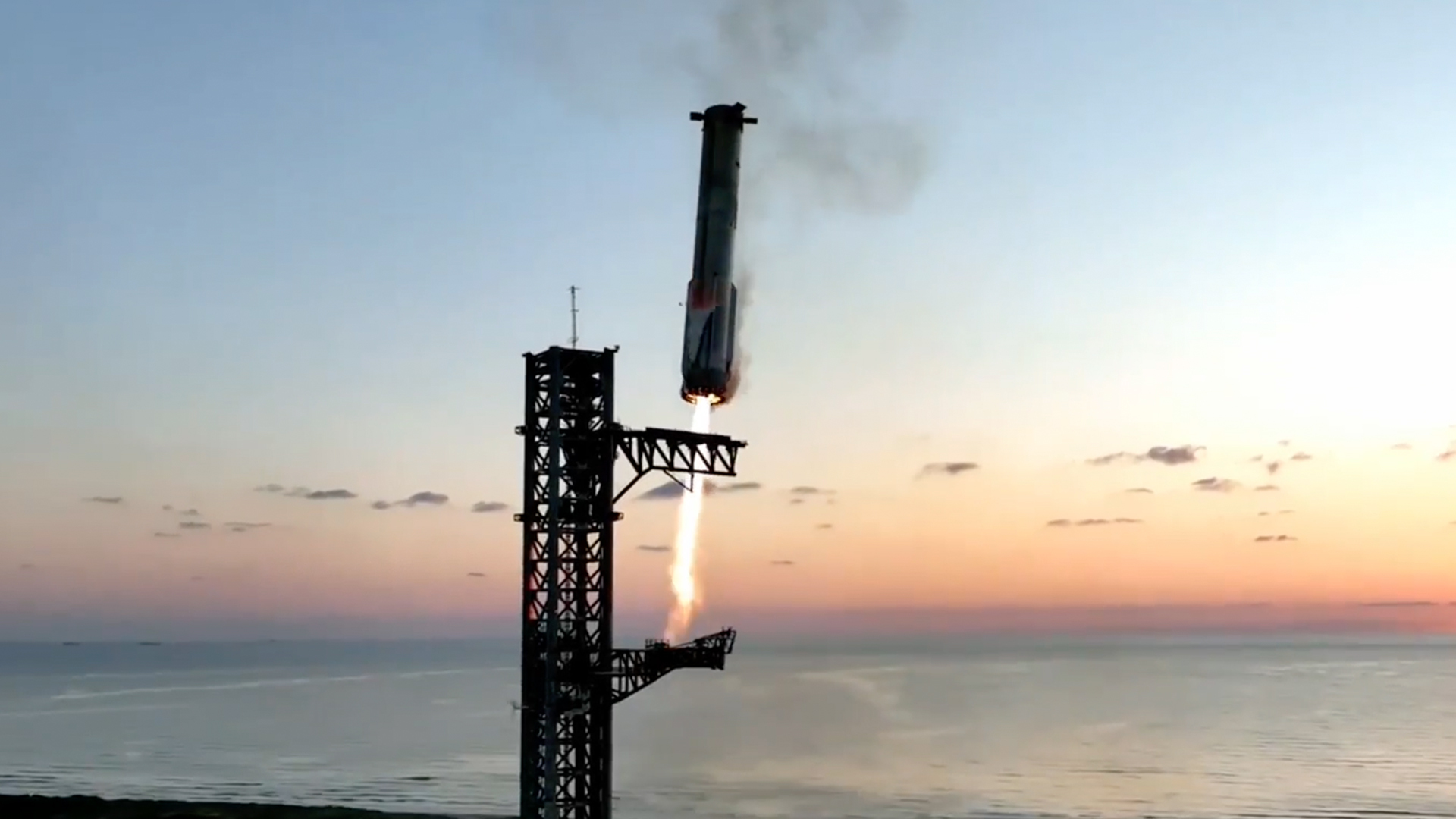
Image of the Day 2023 Archive
Image of the Day 2022 Archive
Image of the Day 2021 Archive
Image of the Day 2020 Archive
Image of the Day 2019 Archive

Space.com is the premier source of space exploration, innovation and astronomy news, chronicling (and celebrating) humanity's ongoing expansion across the final frontier. Originally founded in 1999, Space.com is, and always has been, the passion of writers and editors who are space fans and also trained journalists. Our current news team consists of Editor-in-Chief Tariq Malik; Editor Hanneke Weitering, Senior Space Writer Mike Wall; Senior Writer Meghan Bartels; Senior Writer Chelsea Gohd, Senior Writer Tereza Pultarova and Staff Writer Alexander Cox, focusing on e-commerce. Senior Producer Steve Spaleta oversees our space videos, with Diana Whitcroft as our Social Media Editor.
